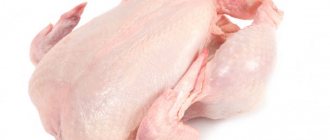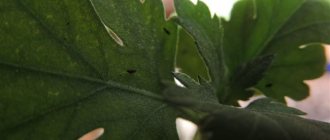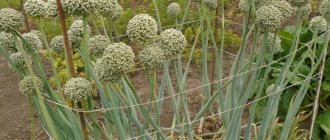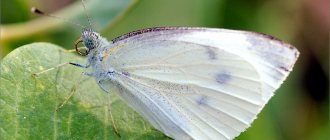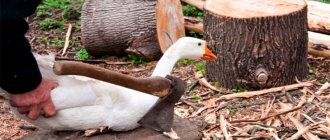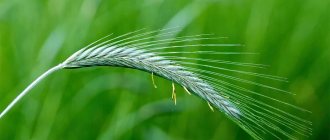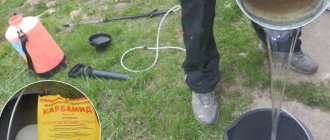Geranium is loved by gardeners for its undemanding nature when it comes to watering and soil composition. The aroma of essential oil emanating from its leaves effectively repels insects. The only thing this flower needs for full development and maintenance of decorativeness is pruning. Without its implementation, the bare shoots are greatly elongated, and the number of inflorescences is significantly reduced - in this form the plant seems neglected and stunted.
Flower growers specializing in geraniums advise carrying out mandatory annual autumn pruning of the plant in order to stimulate the growth of lateral branches and abundant flowering in the next season.
Why prune geraniums?
Geranium (pelargonium) is a popular flower that can be grown both in open ground and at home. Many gardeners plant pelargonium in a flower bed for the summer, and dig it up and bring it indoors for the winter.
Thus, the culture continues to delight with its flowering throughout the year.
But even such a hardy and unpretentious plant needs rest and proper care. In order for pelargonium to bloom profusely, it is recommended to trim it regularly. The procedure is simple, but requires compliance with some features.
Despite how easy it is to care for, geranium also has its own requirements for growing conditions. With proper care, it pleases flower growers with abundant flowering and lush bushes.
MOST READ FROM PARTNERS
✔️ Important! Flowers and yellowed leaves must be removed in any case, regardless of the variety, while trimming the stem is individual for almost each variety, which differ in size.
So, the crop formed shoots and inflorescences throughout the summer, so pruning in the fall is necessary for the following results:
- the bush is rejuvenated. Young shoots are formed, which are less susceptible to diseases and delight with new buds;
- after pruning, the formed buds bloom for a longer period;
- pelargonium takes on a more well-groomed appearance, since during the growing season many leaves fall off and bare shoots begin to be visible;
- the bush is more lush as new shoots appear;
- Pelargonium tolerates winter more easily.
Pelargonium should be pruned in the fall, this way the pelargonium will have time to recover before winter.
Why am I doing it?
Firstly, by getting rid of excess shoots, I manage to form the desired shape of the bush. Secondly, after thinning, its air exchange and lighting improve. As a result, the cut flower quite quickly sprouts new shoots with young leaves and inflorescences. Also, thanks to pruning, the plant’s immunity increases, and it remains vital for several seasons.
Geranium.
When is it better to prune geraniums in spring or autumn?
Pelargonium at home should be pruned both in autumn and spring. In the fall, more thorough pruning is carried out. All damaged and non-flowering shoots are removed. It is important for the gardener to form a bush so that the crop does not lose its attractive appearance in the future.
In spring, the flower requires sanitary pruning. Only damaged shoots and those growing inside the bush need to be trimmed.
NOTE! There is no need to rush to throw away the cut cuttings. You can use them to get a new plant. To do this, the cuttings are placed in water, and when they take root, they are transplanted into the ground.
✅ Pruning geraniums in autumn for winter, step-by-step instructions
To prune in the fall to prepare for winter, you need to follow a step-by-step procedure:
- bring the pelargonium indoors (if it was outside in the summer) and water it generously with warm water;
- leave the pot with the culture for 2-3 days so that the geranium has time to adapt to home conditions;
- prepare tools. Most often a knife or scalpel is used. Instruments must be disinfected. For this, alcohol or any other antiseptic is used;
- carefully examine the bush and remove yellow and dried leaves;
- the next step will be to remove the shoots that grow inward, so that all pelargonium will receive the required amount of light in winter;
- the upper shoots are shortened above the leaf nodes;
- The side branches are pinched so that young shoots appear.
After the geranium has undergone the pruning procedure, you need to sprinkle the cut area with crushed coal. After pruning in the fall, the flower quickly recovers and pleases with abundant flowering throughout the winter.
Video: How to prune geraniums for the winter. Autumn pruning of pelargonium.
MOST READ FROM PARTNERS
Preparing pelargonium for winter
There are several options for wintering geranium, depending on how, where and why it is grown:
- Winter storage for “street” bushes;
- Temporary relocation to a “winter apartment”;
- Preparing indoor pelargonium for winter.
Later in the article I will talk in more detail about each of these situations.
Street geranium
Pelargonium is often used in gardening to create flower beds and decorate outdoor flowerpots. In summer, this flower perfectly tolerates changes in day and night temperatures, direct sunlight and other troubles of life in the open air. But it is not adapted to our winters, so it must be taken into the house.
If you are growing a geranium bush to decorate flower beds or garden flowerpots and consider it only for this purpose, then the winter storage option is suitable for you. In this case, the plant is dug up and transferred to the house for 2 weeks for adaptation. There is no need to water it at this time!
It is important to remember: you need to prepare pelargonium for winter only after flowering has finished!
After a period of adaptation, the geranium is pruned. This option uses a rather radical method: all green shoots are removed down to the lignified part. The roots can also be exposed and shortened or left as is along with a lump of earth - it’s up to you to decide. The main thing is that under no circumstances should excess dampness be allowed.
The remaining “stalk” is carefully wrapped in newspaper or placed in a closed container. In this form, geranium is left for storage in a cellar or other fairly dry, dark and cool place. The temperature during the winter should be kept between 4-10 °C. In the spring, with proper care, the bush will quickly come to life and begin to grow.
If you do not have the opportunity to leave pelargonium in a basement or cellar with appropriate conditions, it can be transferred to the category of indoor flowers for the winter. In this case, the bush is transferred to a temporary “home” pot along with a lump of earth so as not to damage the roots. Care is needed the same as for indoor geraniums.
Indoor geranium
Although the change of seasons is not very noticeable in the apartment, in winter pelargonium needs rest. In order for the plant to safely go into hibernation and gain strength before future flowering, it must be specially prepared, and later, in winter, provided with appropriate care.
The first step is pruning geraniums for the winter. It performs the following functions:
- Formation of the correct crown shape, since without care, pelargonium often grows unaesthetic long and poorly leafy shoots.
- Improvement and rejuvenation of the bush by removing old and diseased branches.
- Reducing nutrient consumption for the winter. Maintaining green foliage requires vitality, while the plant is weakened at this time of year and all its processes are slow.
I will tell you more about the rules of pruning in a separate block; now I want to mention only two important points. Firstly, this procedure can be carried out only after all the inflorescences have withered. Secondly, all types of pelargonium require varying degrees of shortening:
- Royal geranium allows you to carry out a rather radical procedure; you can significantly shorten the shoots, they will quickly recover.
- Ampelous and miniature species also tolerate pruning well, but it is not necessary for them. It is carried out as needed.
- But variegated varieties react with severe stress. It is better not to touch them without strict medical indications. At best, you can remove faded inflorescences and leaves.
The second important point is lighting. Although during conservation the bushes are kept in constant twilight or even darkness, in an apartment at higher temperatures this regime is unacceptable. Geranium requires long daylight hours of up to 12 hours. If necessary, you can use phytolamps.
Finally, the last important point is watering. Since the plant is in dormant mode, and there is not much greenery left after pruning, the need for moisture is greatly reduced. As a result, they water it often, but little by little, so that fungal diseases do not develop in the dampness. It is better to completely eliminate feeding for this period.
How to prune different varieties and types of geraniums
Each type of geranium may have its own individual pruning requirements before winter that must be observed.
Pruning royal geraniums
Royal geranium is distinguished by its demanding care. It blooms at home for 2-3 months, after which it accumulates strength to re-form buds. In order for the royal geranium to be lush and healthy, it needs to be pruned only in the fall. The upper and lateral processes are pinched. Only shoots that grow inside the bush are removed.
Ampelous geranium
The peculiarity of this variety of pelargonium is that it grows quickly and hangs from the pot.
At home it is grown in hanging pots and during the flowering period it will decorate any room.
However, in order for the hanging geranium to have an attractive appearance, it should be pruned not only in the fall, but also in the spring. During the pruning process, all shoots are pinched and those that are dry and growing inward are cut out.
It is necessary to carry out the procedure in the fall only after the crop has completely faded.
Geranium zonal
MOST READ FROM PARTNERS
It is grown both in garden and at home. In order for pelargonium to bloom profusely, it must be pruned twice a year.
All damaged stems are removed. The upper and lateral ones are pinched so that lateral shoots appear.
How to carry out anti-aging pruning of geraniums
Anti-aging pruning in the fall at home is necessary so that pelargonium begins to form young shoots.
The bush is cut by 1/3. In the root zone on the woody shoots you need to make small vertical cuts. This way new shoots will appear.
If the pelargonium is already old, in addition to pruning, it must be replanted in new soil. During transplantation, the roots are carefully inspected and damaged areas are removed.
MOST READ FROM PARTNERS
Pruning geraniums to form a crown
Lush bushes look much more attractive than bare stems, so it is very important to form the crown correctly.
Experts recommend shaping immediately after planting the cuttings. However, if the moment has been missed, you can form a crown in the fall before winter.
For this purpose, sanitary pruning is carried out. All damaged shoots are removed. The top ones need to be pinched.
The lateral processes are also pinched. Thus, a small herbaceous tree is formed. Gradually, the pelargonium will release side shoots and a lush bush will form.
Caring for geraniums after pruning
Pruning in the fall and preparation for winter should be carried out in a timely manner, even at home. It is also important in the fall that after pruning the plant, proper care is taken. Features of home care include:
- watering. Geraniums should be watered at home in winter once every 6-7 days. For irrigation, warm water is used, which has previously settled;
- feeding After pruning in the fall, fertilizing should only be done every other week. Complex fertilizers for flowering plants are used as nutrients;
- spraying with water once every 2 weeks.
In addition, you need to place the flower pot on a well-lit windowsill. Preference should be given to the south side.
NOTE! After pruning in the fall, it is highly not recommended to use nitrogen fertilizers. The amount of nitrogen fertilizers in winter is reduced to a minimum amount. Otherwise, the plant will not be able to go into a dormant state.
Prevention of plant diseases
Almost all geranium diseases occur due to improper care. Therefore, to prevent infections, you need to follow several rules:
- Maintain the correct temperature;
- Control lighting;
- Check soil and air moisture;
- Systematically feed the plant;
- Inspect the flower for defects;
- Fight insects.
You need to be careful with insects such as whiteflies, spider mites and aphids. They appear in rooms with dry air and are carriers of viruses and infections. If these pests are found in a room with flowers, the flower should be washed and treated with insecticides.
The following drugs can be used to control pests and diseases:
- Messenger: used to increase plant immunity.
- Aspirin: used when insects appear. The prepared solution is sprayed onto geranium leaves. If necessary, the procedure can be repeated after three weeks.
- Monterey: Spray when caterpillars are detected.
- Marathon: the drug is used to control insects, but they need to water the soil. The procedure can be carried out a couple of days after planting.

